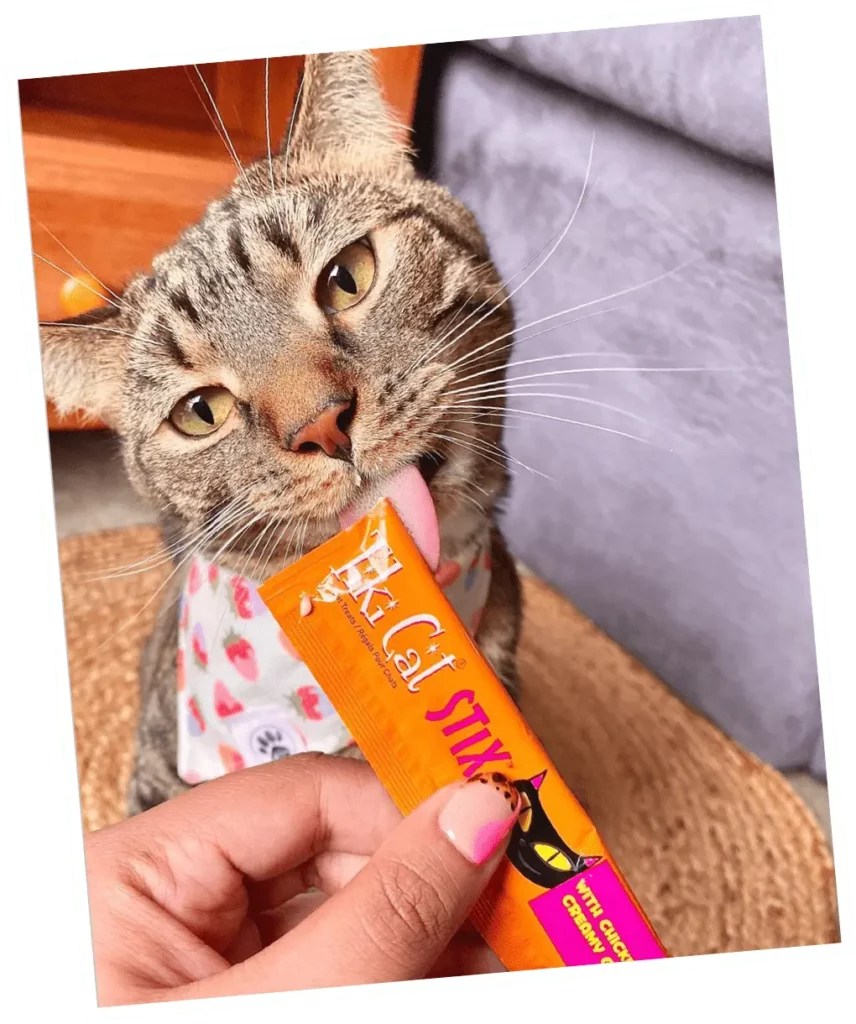Skin and coat problems are a reality for many cats. Sometimes, if you’re lucky, the issues go away on their own. But, more often than not, they stick around, making life uncomfortable for your cat – and you. (Is there a couch underneath all of that fur?)
If you’re both fed up and looking for answers, you’ve come to the right place. First, let’s look at the most common signs of skin and coat issues:
- Licking or scratching more than usual, especially the same spots
- Patches of skin that are bald, red and/or scabbed
- Dry skin flakes, like dandruff
- Dry, dull fur
- Excessive shedding
Unfortunately, there are many reasons why cats can have these skin and coat problems, the most common of which are poor diet and environmental allergies. Other reasons include pests like parasites, mites and fleas, stress, skin infections and disease. Identifying the source of your cat’s skin woes may take time and trial.
If your cat is experiencing any of these signs, first make an appointment with your veterinarian. She or he can examine your cat’s skin and run any necessary tests. If your veterinarian rules out any medical concerns that could be causing the issue, the next step is learning how to manage your cat’s skin and coat health at home.
1) Nutrition
To look healthy on the outside, cats must be healthy on the inside. Since poor diet is one of the biggest contributing factors to poor skin health and dull coat, let’s examine your cat’s food. Eating a diet with low quality and/or not enough protein and fat can wreak havoc on cats’ skin and coat (and overall health). Check out your cat food’s ingredient list and guaranteed analysis, and look for the following:
- Protein – How much protein is in your cat’s food? What kind of protein? As obligate carnivores, cats not only need high quantities of animal protein to survive, but protein also plays a fundamental role in skin cell renewal and hair growth. After all, hair is mostly composed of protein! Make sure that a high-quality, animal-based protein, like real chicken, salmon or tuna, is the first ingredient*, with no plant-based proteins.
- Fatty Acids – The right combination of essential fatty acids is key to healthy skin and shiny coats. Look for ingredients like fish oil, which is an excellent source of omega-3 fatty acids.
We formulated Tiki Cat® Special Skin & Coat specifically to help support healthy skin and shiny coats, with high protein from real salmon and chicken, fatty acids from tuna oil, and coconut oil for anti-inflammatory benefits and to help pass hairballs.
2) Environmental Allergies or Contaminants
Think about when your cat first started showing symptoms. Did you buy something new during that time that could have triggered the reaction, such as a new laundry detergent, cleaning product or perfume? Cats can also suffer from seasonal allergies, like pollen coming through open windows, which can cause itchy skin and watery eyes and nose.
3) Grooming
Cats are naturally self-sufficient at grooming themselves, and it’s rarely necessary to bathe them. However, brushing your cat regularly is very important, because it can help reduce shedding and hairballs by removing loose hair, and it encourages circulation and natural oil distribution for a healthy, shiny coat. To ensure a successful grooming session, only brush when your cat is calm and happy, and reward him or her with treats during and afterward. Also, be especially careful when grooming around any sores or sensitive spots.
4) Seasonal Changes
Most cats shed year-round, but some go through one or two big sheds a year, like in the spring and summer. Be sure to brush your cat a little more during those times. Some cats also experience itchy, flaky skin in the winter with the dry indoor air. Again, regular brushing can help, as well as a humidifier.
If your cat has special skin and coat needs, there is hope. With the right food and the right care, you can get your cat’s beautiful coat – and your fur-niture– back. It may take patience and time, but it’ll be worth it knowing your fur baby is healthy inside and out.
*Protein should always be the first ingredient in dry foods. In wet foods, often broth is a first ingredient and protein is second.


